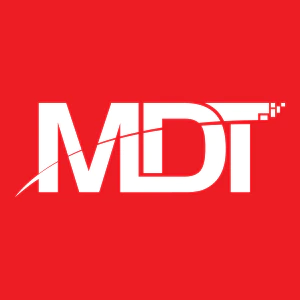As credit unions begin mapping out budgets for 2026, many are asking the same question:
How can we plan more effectively—without the headaches that come with misalignment, last-minute surprises, and outdated assumptions?
For credit unions, budgeting season often feels like threading a needle—juggling limited resources, shifting priorities, and tight timelines. While every leadership team wants to build a better budget, few feel confident they’ve mastered it.
The most successful institutions treat budgeting as a strategic driver—not just a compliance task. And they avoid the same critical pitfalls that consistently trip others up.
In our upcoming white paper, Overcoming Budgeting Pain Points for Credit Unions, we take a deeper dive into these common challenges—featuring lessons and practical guidance from MDT’s consulting experts. Here’s a preview of what we’ve learned—and what to watch for in the months ahead.
1. Budgeting in a Vacuum
When business units plan in isolation, budgeting becomes fragmented. Departments submit numbers without understanding the broader impact—and without factoring in interdependencies. IT and business units often fail to align on scope and timelines, resulting in out-of-sync situations that lead to mid-year budget surprises.
Smarter Approach: Form a cross-functional task force early. Identify dependencies between departments, especially around technology initiatives, and align priorities before finalizing numbers. Collaborating early reduces friction later—and helps reveal costs that would otherwise get missed.
2. Overestimating ROI or Underestimating True Costs
It’s easy to be optimistic when forecasting benefits and costs. But tech projects in particular tend to involve more than what’s listed in a vendor quote—renewals, licensing changes, integrations, and internal lift can all swell total spend. The result? Frustrated teams and ballooning budgets.
Smarter Approach: Let past performance be your guide. Compare historical actuals to prior forecasts and adjust based on what really happened—not what you hoped would happen. If your digital lending rollout exceeded costs last year, don’t assume you’ll avoid the same pitfalls this year. Learn and adapt.
3. Budgeting for the Present, Not the Future
Too often, budgeting starts with last year’s numbers and works forward from there. But without clear alignment to strategic priorities, budgets risk reinforcing the past instead of building the future.
Smarter Approach: Anchor your budget in your strategic plan—not in what’s been done before. What new initiatives are planned? What long-term outcomes are you working toward? Budgeting for future goals involves allocating funds for infrastructure, innovation, and workforce development, even if these line items didn’t exist last year.
4. Ignoring Hidden and Obsolescence Costs
No tech project stands alone: Tools become outdated, vendors shift pricing, and “invisible” line items like file transfers, data imports, and backup systems add up fast. Too many credit unions plan for a clean technology launch—without planning for what happens next.
Smarter Approach: Budget for the whole picture—not just the vendor quote. Collaborate across departments to understand the ripple effects of new tools and processes. Build in a contingency buffer (typically 5–10%) to protect against change orders, pricing swings, and unplanned resource needs. A slightly larger estimate today is better than a major variance six months from now.
A Smarter Way Forward
What sets high-performing credit unions apart isn’t perfect forecasting—it’s intentional planning. These institutions link dollars to strategy, invite cross-functional collaboration, and treat budgeting as an ongoing discipline—not a one-and-done event.
And while no budget is flawless, there are better questions to ask:
- Are we budgeting for where we’ve been—or where we want to go?
- Have we included the right people at the right time?
- Are we tracking assumptions and results—or just inputs?
The strongest budgets are built on strategy—not guesswork. They’re rooted in collaboration, tested by real-world performance, and revisited throughout the year.
Coming Soon: MDT’s Full Budgeting White Paper
These topics—and many more—are explored in our upcoming white paper, releasing in September 2025. You’ll get practical guidance on aligning budgets with strategy, surfacing hidden costs, and building more agile processes that can weather uncertainty.
Want to help shape the conversation? We’d love your input.
Take our 1-minute survey and share your biggest budgeting challenge:
Let’s build better budgets—together.
Stay tuned—and in the meantime, ask yourself: Are you budgeting for where you’re headed, or just where you’ve been?

